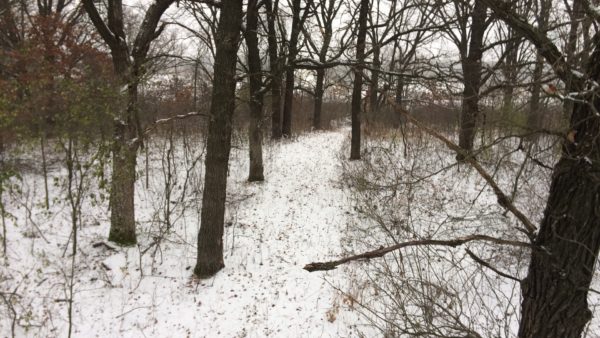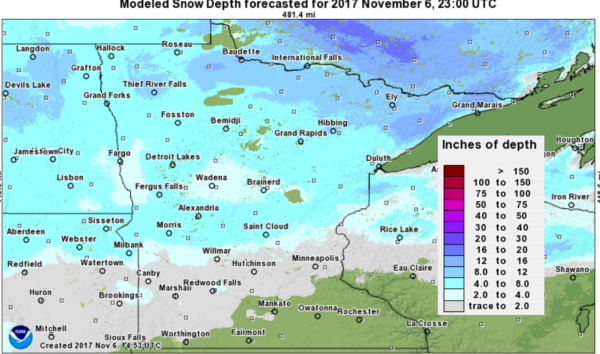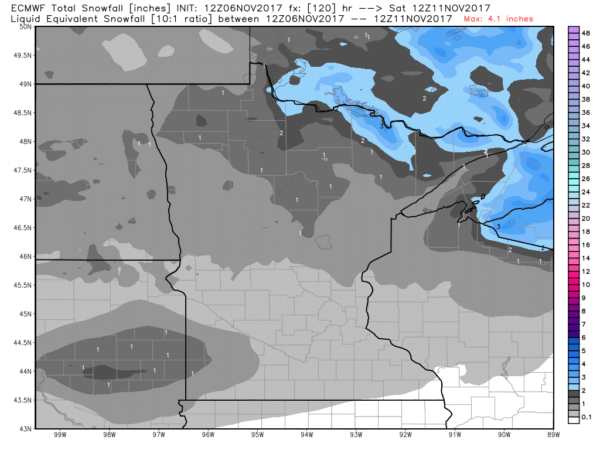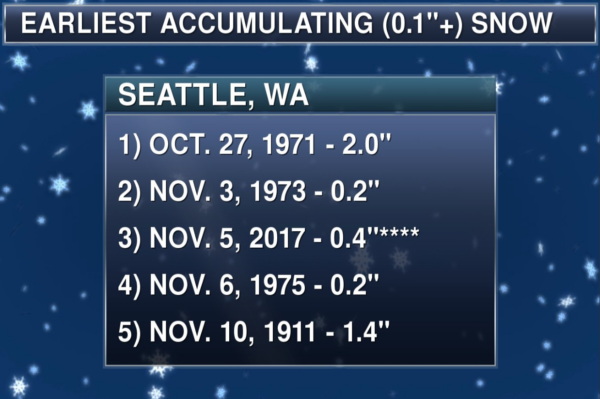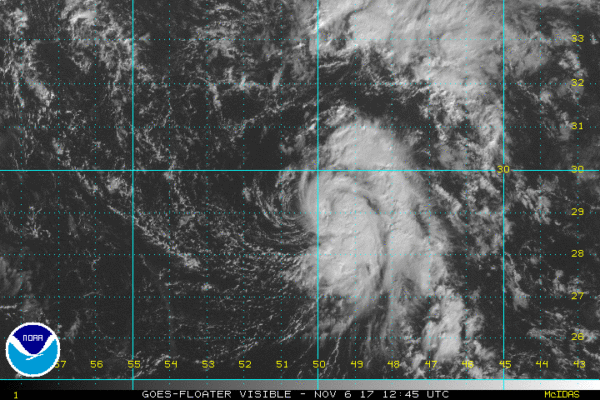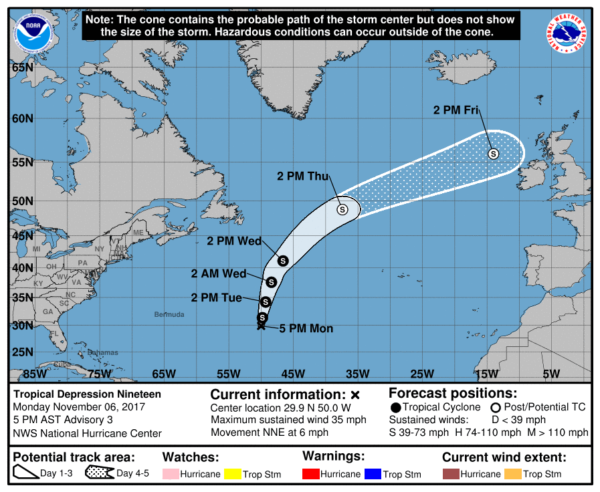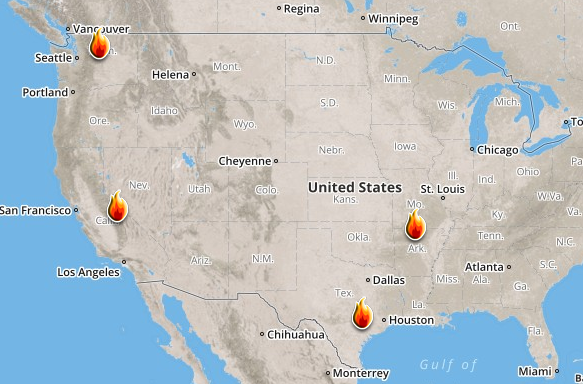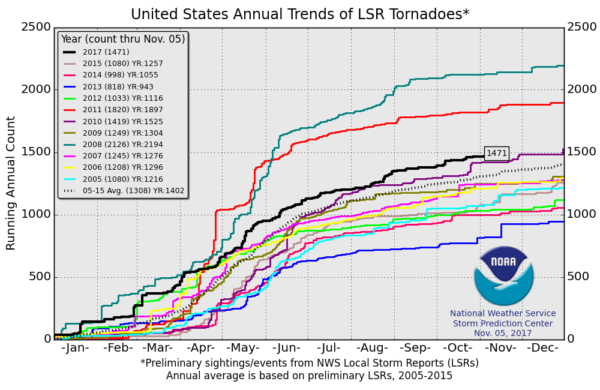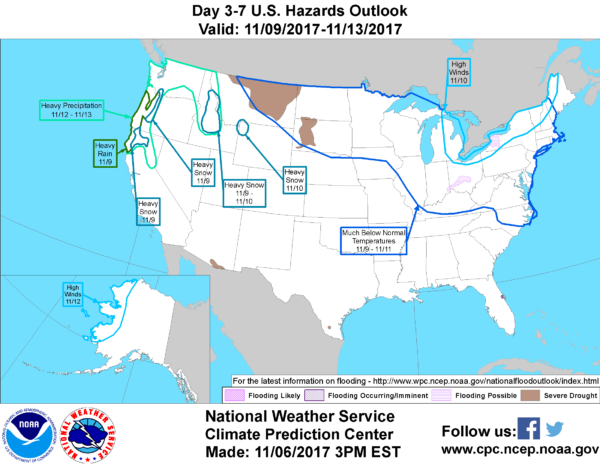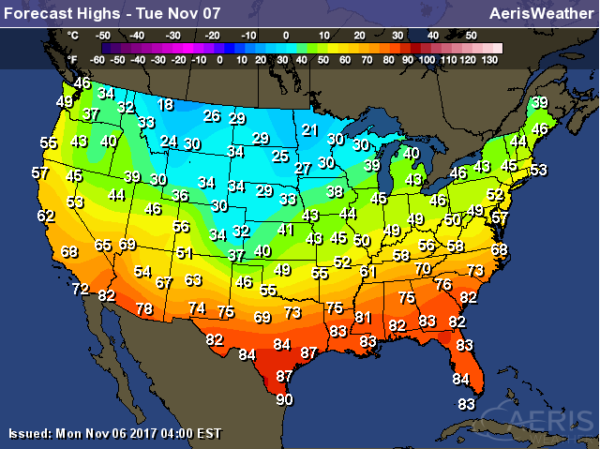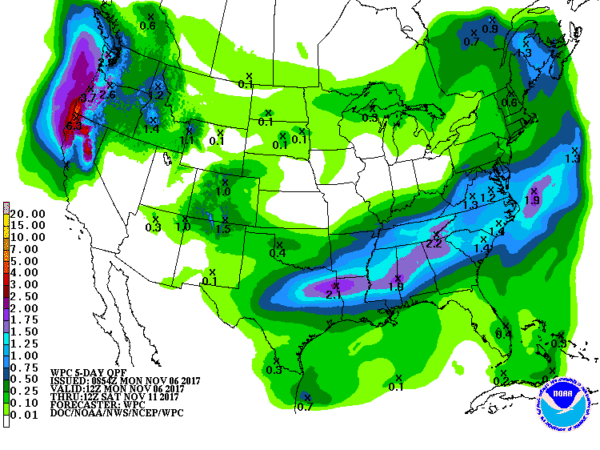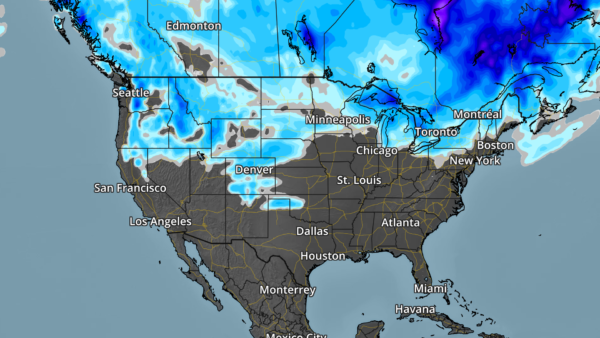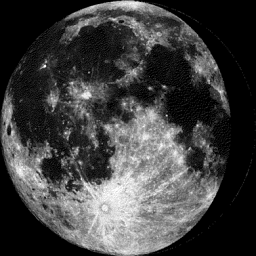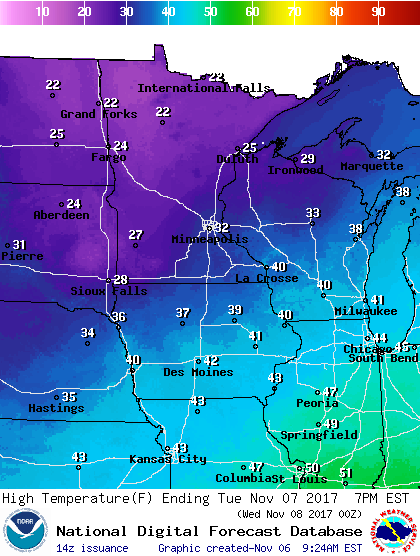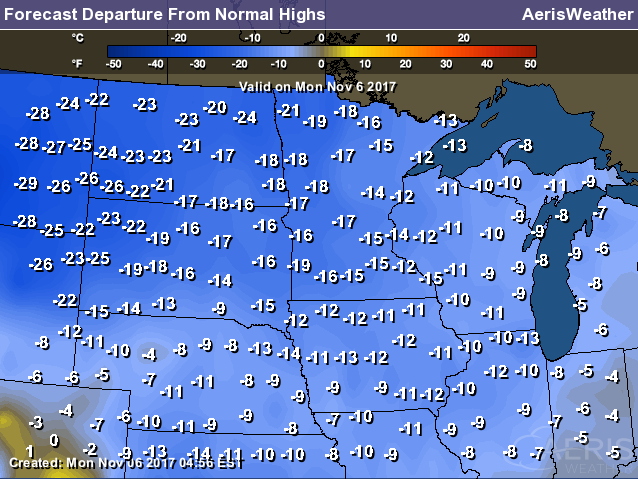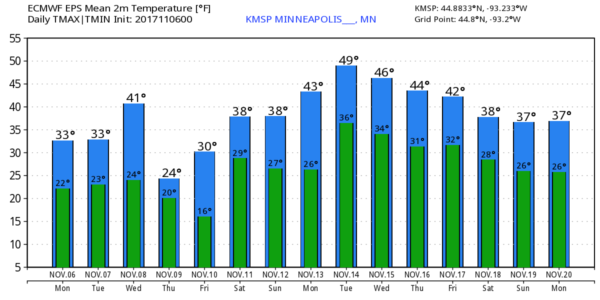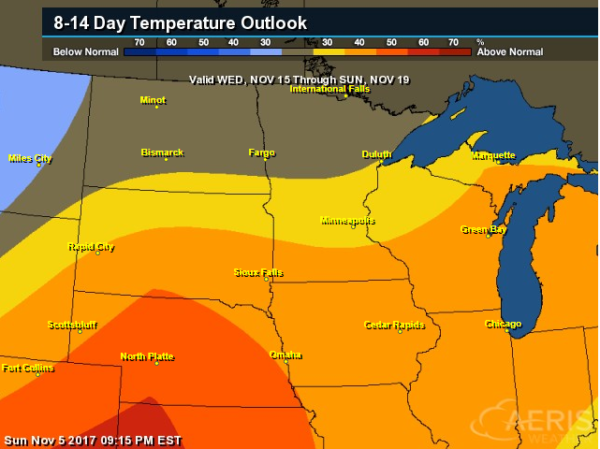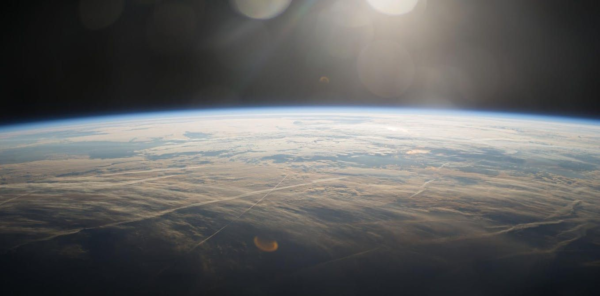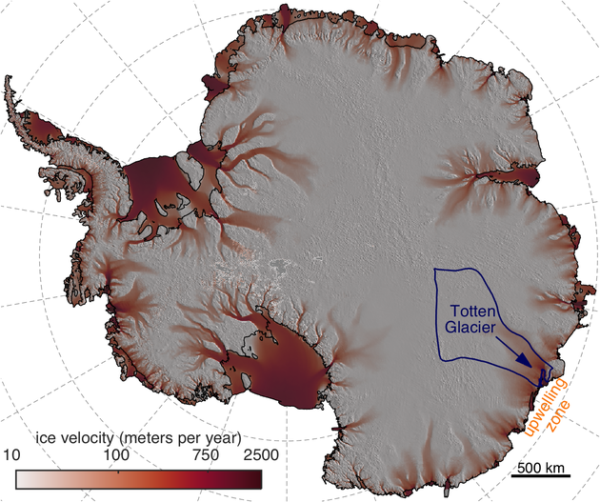
Snowfall Potential Through the Week
Here’s the snowfall potential through Saturday morning, which suggests minimal snowfall potential through the first full week of November. The best potential of any accumulation looks to be in far northern MN, where an 1″ or 2″ maybe possible.
We are less than 1 month from the official close of the Atlantic Hurricane Season (November 30th). Note that peak activity generally occurs on September 10th and stays somewhat active through the month of October, but really diminishes through the month of November. With that said, there have been years where tropical activity continues through the end of the year and even into the follow calendar year! 2005 was one of those years as Tropical Storm Zeta developed December 30th and continued through January 6th, 2006.
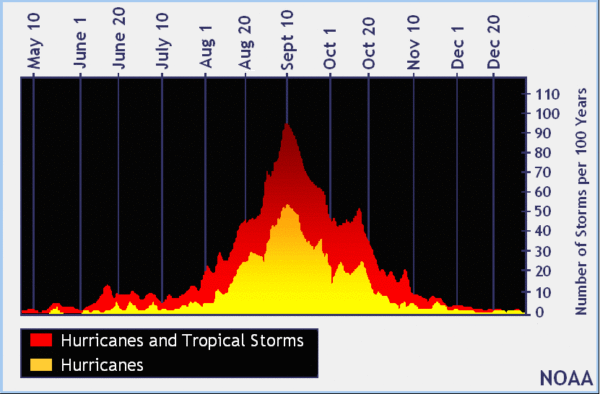
___________________________________________________________
Ongoing Large Wildfires
Here’s a look at the current wildfire map across the country. Note that wildfire activity as REALLY slowed down with only a few major wildfires still burning across parts of California, Washington, Arkansas and Texas.
It certainly has been a fairly active first half of 2017 with 1,471 preliminary tornado reports through October 31st. Note that this is the most tornadoes through that date since 2011, when there were 1,820 reports. The map below shows the distribution of the tornadoes so far this year.
PRELIMINARY 2017 Tornado Count
According to NOAA’s SPC, the PRELIMINARY 2017 tornado count is 1,463 (through November 5th). Note that is the most active year for tornadoes since 2011, when there were 1,820 tornadoes. Keep in mind there was a major tornado outbreak in the Gulf Coast region from April 25-28, 2011 that spawned nearly 500 tornadoes, some of which were deadly. That outbreak is known as the Super Outbreak of 2011 and has gone down in history as one of the biggest, costliest and one of the deadliest tornado outbreaks in history.
National Weather Hazards Ahead…
1.) Heavy rain and snow (higher elevations) across portions of California and the Pacific Northwest, Thu, Nov 9.
2.) Heavy snow across portions of the Northern Rockies, Thu-Fri, Nov 9-Nov 10.
3.) Heavy snow across portions of Wyoming and southwest Montana, Fri, Nov 10.
4.) Heavy precipitation across portions of California, the Pacific Northwest, the Northern Rockies, and the Northern Great Basin, Sun-Mon, Nov 12-Nov 13.
5.) High winds across portions of the Northeast and the Great Lakes, Fri, Nov 10.
6.) Much below normal temperatures from the Northern Rockies to the Great Lakes, Northeast and Mid-Atlantic, Thu-Sat, Nov 9-Nov 11.
7.) High winds across portions of mainland Alaska, Sun, Nov 12.
8.) Heavy precipitation across portions of the Pacific Northwest, the Northern Rockies, and the Northern Great Basin, Tue-Wed, Nov 14-Nov 15.
9.) Flooding possible across portions of Western New York and the Ohio Valley.
10.) Flooding occurring or imminent across portions of Florida.
11.) Slight risk of much below normal temperatures for portions of the Alaska Panhandle and mainland Alaska, Tue-Mon, Nov 14-Nov 20.
12.) Moderate risk of much below normal temperatures for portions of the Alaska Panhandle and mainland Alaska, Tue-Thu, Nov 14-Nov 16.
13.) High risk of much below normal temperatures for portions of mainland Alaska, Tue-Wed, Nov 14-Nov 15.
14.) Severe Drought across Hawaii, the Southern Plains, the Northern Plains, the Northern Rockies, and the Southwest.
_____________________________________________________________________
Here’s a look at high temperatures across the nation on Tuesday, which suggests that temperatures across the northern half of the nation will be well below average. Some locations from Montana to Minnesota and into the Central Plains could be nearly -20F colder than average. However, parts of southern Texas to the Gulf Coast states could be nearly 10F to 15F above average.
National Weather Outlook
Here’s the weather outlook through AM Wednesday, which shows fairly active weather across the country as a cold front slowly drifts south into the Southern US. Areas of widespread rain and thunder will be possible with areas of locally heavy rain from Texas to the Gulf Coast. There will also be areas of heavy snow across the Central Rockies as an area of low pressure slowly drifts south. The 2nd half of the week will feature areas of heavy precipitation in the Western US with more snow in the high elevations.
.gif)
According to NOAA’s WPC, areas of heavy precipitation will be possible across parts of the Arklatex region through the Mid-Atlantic states. Some locations could see 1″ to 2″+ through the end of the week. The storm system that looks to move into the Western part of the country later this week will likely produce several inches of precipitation through the end of the week. Some locations could see 3″ to 6″+ of liquid, which could turn into heavy high elevation snow
By Paul Douglas
This Day in Weather History
November 7th
1844: A large prairie fire at Fort Snelling occurs, followed by more fires later on in the week.
________________________________________________________
Average High/Low for Minneapolis
November 7th
Average High: 46F (Record: 72F set in 1874)
Average Low: 31F (Record: -6F set in 1991)
Record Rainfall: 1.67″ set in 1915
Record Snowfall: 4.2″ set in 1947
_________________________________________________________
Sunrise/Sunset Times for Minneapolis
November 2nd
Sunrise: 7:00am
Sunset: 4:53pm
Hours of Daylight: ~9 hours 53 mins
Daylight LOST since yesterday: ~2 minutes and 37 seconds
Daylight LOST since summer solstice (June 20th): 5 hours & 44 minutes
__________________________________________________________
Moon Phase for November 7th at Midnight
2.6 Days Before First Quarter
Tuesday will be another chilly day across the region with temps running nearly 10F to 15F below average. Much of the state will only see highs in the 20s and 30s across Minnesota and the northern half of Wisconsin.
Here’s the temperature outlook through November 20th, which shows chilly temps continuing as we head through the first full week of November. The extended forecast suggests temps warming into the mid/upper 40s by mid month before cooling a bit by the 3rd weekend of the month.
6 to 10 Day Temperature Outlook
After a very chilly start to November, it appears that warmer than average temperatures will move back into the Upper Midwest from November 15th to November 19th.
6 to 10 Day Temperature Outlook
According to NOAA’s CPC – much of the nation will remain above average with the exception of the Northwestern US, where cooler than average temps will be found.
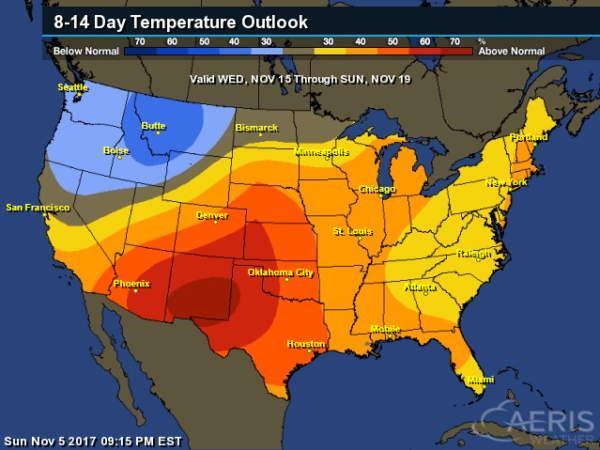
_____________________________________________________________________


